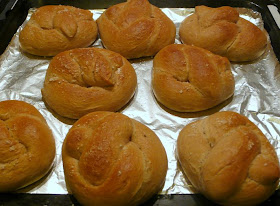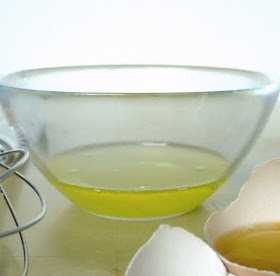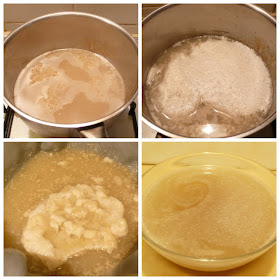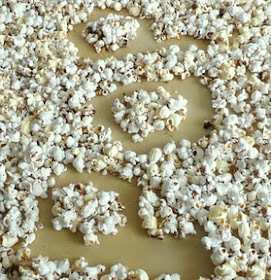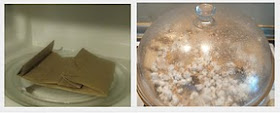| Local fruit dress up this pavlova |
The June 2010 Daring Bakers’ challenge was hosted by Dawn of Doable and Delicious. Dawn challenged the Daring Bakers to make Chocolate Pavlovas and Chocolate Mascarpone Mousse. The challenge recipe is based on a recipe from the book Chocolate Epiphany by François Payard.
You can get the full recipe here.
I've only been a DB member for a little while so I don't understand some of the requirements. I know we're allowed to substitute or change the recipe if any of the ingredients are unavailable or expensive but even though there are mandatory items where some or all of the components of a dish must be made according to the recipes provided, I have noticed that there are Daring Bakers in a particular challenge who don't always adhere to this ruling.
Well, it's not a competition, so there's nothing illegal about it. This time – and it's only my third challenge – I am taking some liberties. First of all, Mascarpone and heavy cream, used in the filling, are expensive items over here and the recipe calls for quite a lot of both ingredients. In addition, I think that pavlovas don't require such a rich filling since they're sweet on their own. So I decided to make it in three layers, fill it with coffee custard (recipe below), dust the top with cocoa powder and serve it with local fruit.
It's not the prettiest thing – check out what other Daring Bakers have done; there's some fantastic stuff there! – and I blame that on my slicing, but paired with mango, papaya and dragon fruit, it tasted really good. (I also got some custard apple, which I included in the picture, but with all the seeds, it is a fruit to eat on its own.)
This is a dessert that doesn't keep well, so fill it and eat it. I thought I could take the pavlova minus the one slice to work the next day for some colleagues, but it had turned to mush when I took it out of the fridge!
COFFEE CUSTARD FILLING
2 tablespoons custard powder
2 tablespoons caster sugar
250ml milk
| Layers of crunch with a gooey centre |
This is a dessert that doesn't keep well, so fill it and eat it. I thought I could take the pavlova minus the one slice to work the next day for some colleagues, but it had turned to mush when I took it out of the fridge!
COFFEE CUSTARD FILLING
2 tablespoons custard powder
2 tablespoons caster sugar
250ml milk
1 tablespoon instant coffee dissolved in 1 tablespoon water
- Combine custard powder and sugar in a small saucepan over low heat. Gradually stir in milk and cook, using a wooden spoon to stir, for 2 minutes or until the mixture thickens. Stir in coffee mixture. Transfer to a large heatproof bowl. Cover the surface with plastic wrap and place in the fridge for 30 minutes to chill. Stir custard until smooth before using.



